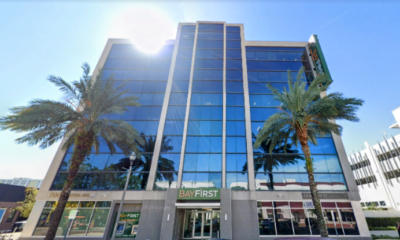Create
Romeo, Juliet get a ‘Happy Ending’ at American Stage


L. Peter Callender is directing the adaptation he wrote with Kristin Clippard. “I realized,” he says, “that my audiences want something that they can sit and understand, and be absolutely clear about.”
The subtitle of American Stage’s new production of Romeo and Juliet is the first clue that something here is not quite traditional.
Opening Thursday in Williams Park, the play’s full title is Romeo & Juliet in America (The One With the Happy Ending).
R and J, of course, is perhaps Shakespeare’s best-known tragedy. As anyone with his Capulets on straight knows, there’s not a happy ending in sight.
Director L. Peter Callender, who adapted the classic work with American Stage Associate Artistic Director Kristin Clippard, says that after 470 years, the story has been tweaked, adapted and changed so many times in popular culture, surely one more is OK.
“After we’ve all been sent to our rooms for what, 17 months now, we all need a happy ending,” Callender explains. “We all need a lift, a boost. I don’t think anyone wants to see another tragedy right now.
“Yes, we would like a few tears, because the production does have those elements to it. But we wanted to cheer people up, so we adapted Romeo and Juliet for that purpose.”
Most importantly, he says, “The language is the same: Two households, both alike in dignity in fair Verona, where we lay our scene … I didn’t say ‘in fair Corona,’ and I didn’t say ‘in fair St. Petersburg …’ I wanted that language to remain.

Kiara Hines and Josh Odsess-Rubin are the star-crossed lovers in “Romeo & Juliet in America (The One With the Happy Ending).” Photos: American Stage.
“But soft, what light through yonder widow breaks? It is the east, and Juliet is the sun … However, we trimmed a lot of the language to keep it under two hours, certainly, but a few of those lines were placed in other parts of the show.”
The key word here is not “contemporized” – there are no finger-snapping musical duels between Sharks and Jets – but “adapted.”
“I don’t want to give too much of it away, but I will say the word ‘dream’ appears in this play like 15 times. I wanted to play with that word a little bit. So the play has a lot to do with dreams.”
Callender, who’s in his sixth years as a resident director with American Stage, is the artistic director of San Francisco’s African American Shakespeare Company. So he knows what he’s doing.
“Look, I am a purist,” he explains, “I grew up with ‘Every word must be spoken; we have to understand everything we’re saying. If we understand it, the audience will understand it.’ But I’ve transformed over the years.
“As actors, directors and dramaturgs, we have all these tomes on our desks: The Complete Works, The Lexicons, the Oxford Dictionary, we have this, we have that … all sorts of books all over the place to help us out.
“The audience comes in with their programs, and they sit and they listen. And they have to understand all the things that we didn’t understand, but we had all these books to help us understand. But they don’t. So there needs to be a balance there, so our audiences will sit and say ‘Oh, I get it.’
“But the story’s still there. The language is still there. The rhythm is still there. The cadence is still there. The poetry.”
He’s directing the six-member cast with contemporary costumes, on a “skeletal” set featuring levels of scaffolding.
As for moving things around on the Williams Park stage: “This is my first show outdoors here. I’m dealing with sirens and buses and people in the park. You can’t tell people that they can’t make noise in the park while we’re performing. The actors are miked, the sound is beautiful, the lighting is gorgeous. We have an amazing cast.
“So I think when you see it, you’ll feel that this is something you’ve not experienced in Williams Park before.”
Romeo & Juliet in America (The One With the Happy Ending) is presented in a preview performance Wednesday; the show opens Thursday and runs through Aug. 1. Tickets and details are here.
.







